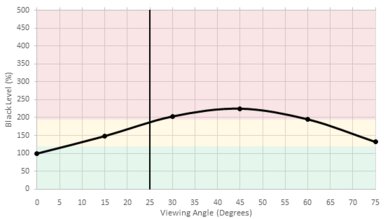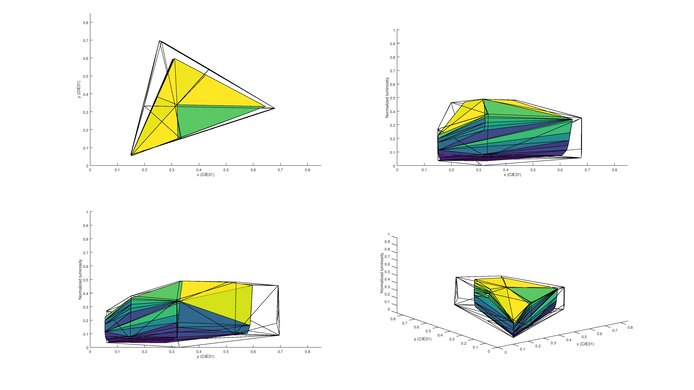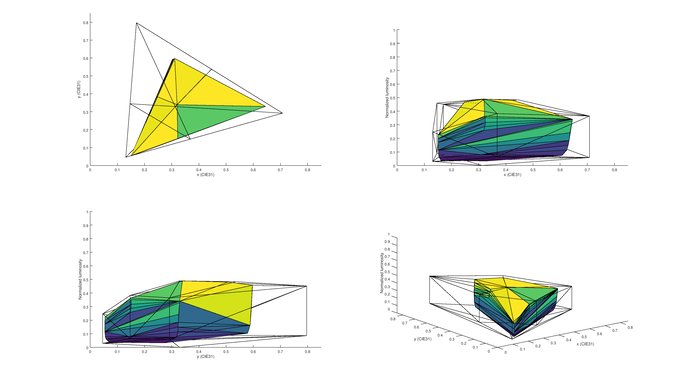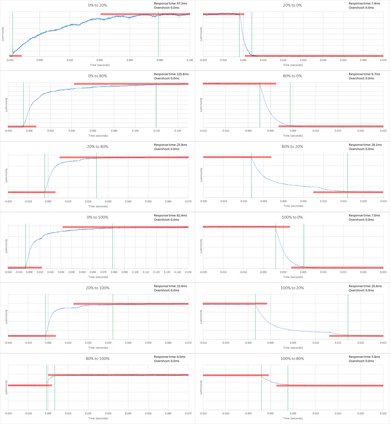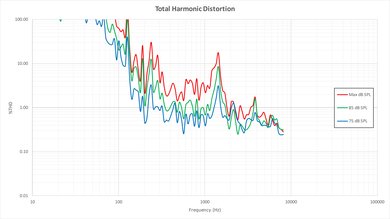The Vizio E Series 4k 2016 that we reviewed has a average picture quality for a 4k UHD TV. It has a lot of blur on fast action movements and its picture quality deteriorates quickly as soon as it is viewed slightly from the side. Only movies revealed to be a decent experience on it.
Our Verdict
Average TV for mixed usage. Picture quality is OK, but lots of problems with fast movement. Gray uniformity is average. Only movies appear quite good.
-
Good contrast ratio and uniform blacks
-
Picture quickly deteriorates when viewed from the side
-
Fast motion appears blurry
-
No built-in tuner
Fairly good for watching movies in a dark room. Picture quality is average but has quite deep blacks. Colors can be calibrated to be quite accurate. Plays blu-rays smoothly.
Average performance in a bright living room. Okay at dealing with reflections but can't get bright to compete with glare. Picture quality diminishes rapidly when viewed from the side. Lacks tuner.
Average sports performance. Although playing fields appear uniform, any motion has a long visible trail. When viewed from the side, picture quality deteriorates quickly.
Average for gamers. Although the input lag is good, any fast moving scenes have lots of blur. Upscaling of old consoles is average.
Doesn't support HDR. Limited color gamut and can't get bright highlights. Average picture quality.
Not good for a PC monitor. Although the input lag is good, it doesn't support chroma for clear text. Lots of motion blur results in a trail following movement.
- 6.9 Mixed Usage
- 7.2 Movies
- 6.7 TV Shows
- 6.8 Sports
- 7.5 Video Games
- 6.8 HDR Movies
- 5.2 HDR Gaming
- 6.7 PC Monitor
Changelog
Check Price
Differences Between Sizes And Variants
The Vizio E Series 4K TV that we bought is the 48" with SKU E48U-D0. Different sizes have different panel provenances, so it is possible our review doesn't represent exactly all sizes. If someone's Vizio E Series 4k doesn't correspond to our review, let us know and we will update the review.
Note: This review does not apply to the 1080p variant of the Vizio E, which we will review separately.
| Size | Model | Effective Refresh Rate | Real Refresh Rate | USB # | Speakers | Local Dimming Zones |
| 43" | E43u-D2 | 120 Hz | 60 Hz | 2 | 10W x 2 | 10 |
| 48" | E48u-D0 | 120 Hz | 60 Hz | 1 | 15W x 2 | 10 |
| 50" | E50u-D2 | 120 Hz | 60 Hz | 2 | 10W x 2 | 12 |
| 55" | E55u-D2 | 120 Hz | 60 Hz | 2 | 10W x 2 | 10 |
| 55" | E55u-D0 | 120 Hz | 60 Hz | 2 | 15W x 2 | 10 |
| 60" | E60u-D3 | 120 Hz | 60 Hz | 2 | 10W x 2 | 10 |
| 65" | E65u-D3 | 120 Hz | 60 Hz | 2 | 10W x 2 | 12 |
| 70" | E70u-D3 | 120 Hz | 60 Hz | 2 | 10W x 2 | 12 |
Popular TVs Comparisons

The Vizio E 4k 2016 that we reviewed is hard to recommend because of the amount of motion blur it has. Other similarly priced TVs performs better and make more sense when it comes to a buying decision.
Test Results
Although better than last year design, the Vizio E Series 4k 2016 still doesn't rival higher end TVs. It is still a thick TV but gone is the blocky design. The back of the TV has smoother curves now. The stand is separated into two feet.
The TV has a full-array backlight, but doesn't have good local dimming performance. The entire screen dims, including bright objects, and highlights flicker. Depending on the TV in the series, there are either 10 or 12 local dimming zones.
The Vizio E Series 2016 has a bad SDR peak brightness. This TV can get very bright, and the local dimming dims too much the small highlights. This makes this TV not the best option if you have a bright room since it won't get bright enough to fight glare.
Update 02/09/2016: With the latest firmware update (3.0.12.2) The 55 inch and larger models of the Vizio E Series 4k 2016 are now HDR compatible.
The only possible way to fix the issues that were apparent in the pre-calibration was with the use of a handheld device. By downloading the 'Vizio SmartCast' application we were able to adjust most of the settings on the television, but it was a tedious process.
Although the larger variants of the E Series 4k 2016 has been updated to support HDR, it can't produce the saturated colors necessary for an improved image.
The pixel sub-structure is horizontal much like the Sony W650D, R510C and the TCL FS3800 that we reviewed. This kind of pixel alignment results in narrower horizontal viewing angle but slightly better vertical viewing angle, like for a bedroom where the TV is usually a little above the viewers eye level.
This TV is horrible when it comes to dealing with motion blur, there is a long trail behind the logo that can be seen fairly well. The response time is quite high as well with most of the transition taking a fair amount of time. The backlight of the TV isn't flicker free, which may annoy some.
The Vizio E Series 4k 2016 has the 'Clear Action' option which reduces the backlight frequency and helps to clear up motion a bit.
24p content over a 24Hz signal is displayed with no judder, however judder is experienced when playing 24p movies over a 60Hz signal. Game mode reduces some of the judder, but it is still present.
Unlike the cheaper D Series 4k 2016, this TV doesn't have any motion interpolation setting.
Update 02/09/2016: Retested with the newest firmware (3.0.12.2). The input lag under a 1080p resolution is now higher than before by almost 15 ms, but on the other hand, the 4k input lag is now around 15 ms better than before. Note that the 55" and larger models of the Vizio E Series 4k 2016 are now compatible with HDR.
Update 02/09/2016: Retested with the newest firmware (3.0.12.2) and now the Vizio E Series 4k 2016 can now display the chroma subsampling correctly when set in the 'Computer' picture mode.
Update 02/09/2016: With the latest firmware update (3.0.12.2) The 55" models and up of the Vizio E Series 4k 2016 are now HDR compatible.
Good frequency response, which is relatively flat for the most part. However, the low-end cutoff of 143Hz means that this TV lacks a lot of bass. Also, with maximum loudness of 88.3dB, this TV doesn't get very loud either. And when it does, some pumping and compression may be present.
This TV uses SmartCast, and as such there is no application on the actual TV itself. However, if you have a handheld device you will have many applications to choose from that supports casting. There are already many major application such as Youtube, Netflix and Spotify that supports it. Amazon Prime isn't supported at the moment.
Just like the Vizio P Series, the Vizio E Series 4k 2016 also uses SmartCast as an operating system which is similar as that of the ChromeCast operating system. The television waits for a feed, whether it be a video or a photo, to be sent from a handheld device using an application that supports casting. Unlike the Vizio P Series this TV doesn't not with an included tablet, therefore you would have to use your own handheld device to take advantage of the casting services.
It lacks a built-in tuner, which means you cannot connect an antenna or cable directly to the TV. You will need to buy a separate tuner like this one.
The remote that comes with the Vizio E 4k 2016 is the same basic one that come with the Vizio P Series 2016. The Vizio E 4k 2016 is made to be controlled via the Vizio SmartCast application using a smart phone or tablet which isn't included in the box.
Comments
Vizio E Series 4k 2016: Main Discussion
Let us know why you want us to review the product here, or encourage others to vote for this product.










